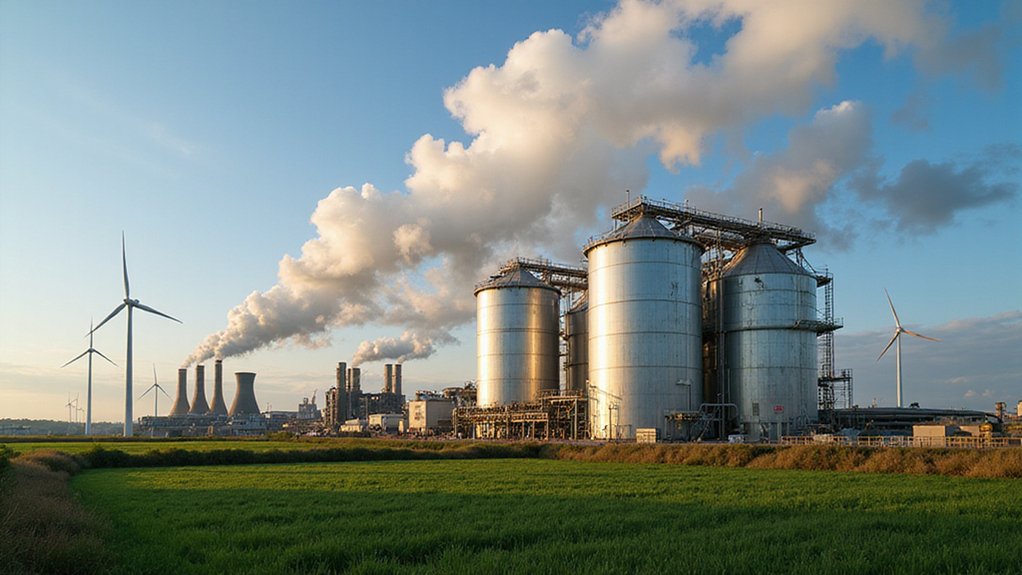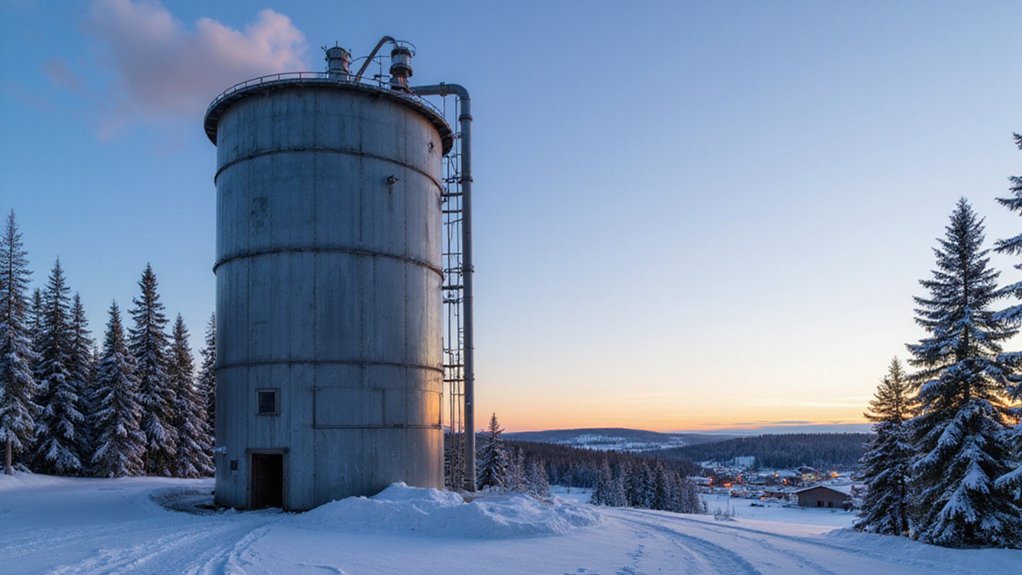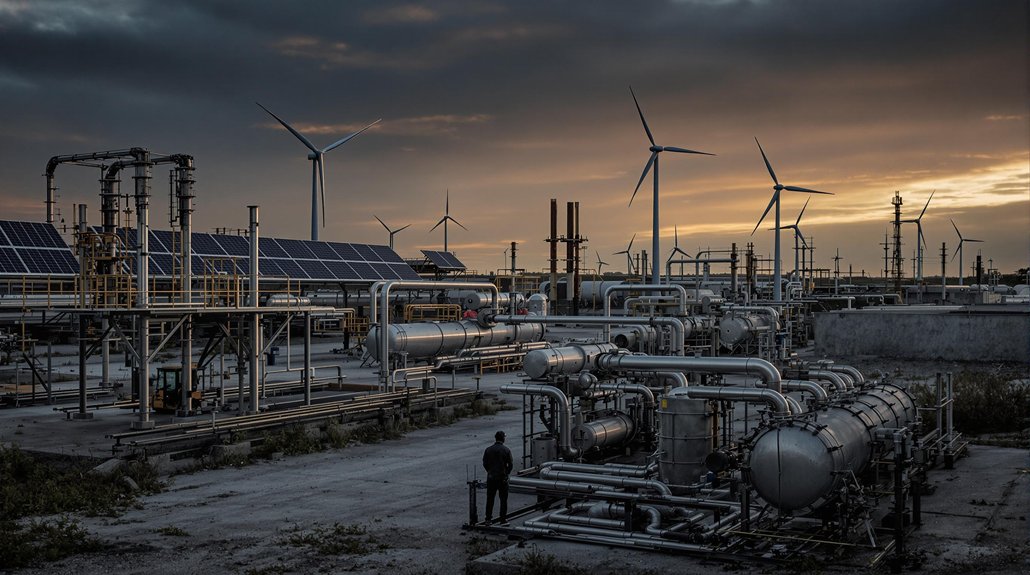Bitcoin’s mining industry is going greener, with 52.4% now powered by renewable energy. The U.S. leads with 75.4% of global hash rate, while operations in Iceland run entirely on geothermal power. Miners actually help stabilize power grids by consuming excess energy when needed. Despite using as much electricity as Argentina, Bitcoin’s environmental impact is decreasing. Annual emissions? Just 0.08% of global carbon output. The numbers tell a surprising story.
While Bitcoin has long been criticized for its massive energy consumption, the cryptocurrency is undergoing a surprising change that few saw coming. The digital currency that once guzzled electricity like a thirsty giant is now leading an unexpected green transformation.
Bitcoin mining still consumes 127-138 terawatt-hours annually—about the same as entire countries like Argentina or Egypt. Not exactly environmentally friendly, right? Yet the industry is rapidly changing its power sources.
More than half of Bitcoin’s energy needs now come from renewable sources. That’s right—a surprising 52.4% of Bitcoin mining now runs on sustainable energy, primarily hydropower and wind. Natural gas still accounts for 38.2% of the mix, but the trend is clear: miners are going green.
Bitcoin’s green revolution isn’t just talk—52.4% renewable energy speaks for itself while natural gas’s share steadily shrinks.
They’re not doing this out of the goodness of their hearts, though. It’s economics, pure and simple. Renewable energy cuts operational costs. Who knew being environmentally conscious could also be profitable?
Mining operations in places like Texas, Iceland, and Canada are proving that sustainability and profitability can coexist. Iceland’s geothermal-powered mining operations are particularly impressive. No fossil fuels required—just the planet’s natural heat. These operations benefit from geothermal energy’s remarkable capacity factor of 96%, ensuring nearly constant power availability unlike intermittent renewables.
The United States dominates with 75.4% of the global hash rate, followed by Canada at a distant 7.1%. These countries are where the renewable transformation is happening fastest.
Bitcoin mining is also providing unexpected benefits to power grids. The operations can adjust energy consumption based on demand, fundamentally functioning as a flexible load that stabilizes the grid. They consume excess renewable energy that would otherwise go to waste. This flexibility allows miners to participate in demand response programs that provide financial incentives while alleviating stress on energy infrastructure. Talk about a win-win.
Despite producing 39.8 Million Tons of CO₂e annually (0.08% of global emissions), the industry’s environmental impact is shrinking as renewables take over. Solar farms that integrate Bitcoin mining operations can achieve return on investment twice as fast as those without mining integration. Who would’ve thought that Bitcoin—once an environmental villain—might actually help accelerate the world’s change to renewable energy?
The cryptocurrency’s green transformation is real, and it’s happening right now.
References
- https://cryptoforinnovation.org/how-is-renewable-energy-stabilizing-the-grid-for-bitcoin-mining/
- https://osl.com/academy/article/how-renewable-energy-is-shaping-the-future-of-bitcoin-mining
- https://www.etftrends.com/crypto-channel/crypto-miners-should-speed-renewable-adoption/
- https://news.cornell.edu/stories/2023/11/bitcoin-could-support-renewable-energy-development
- https://cryptoslate.com/bitcoin-mining-pushes-sustainability-agenda-with-over-50-of-energy-generated-from-renewables/








